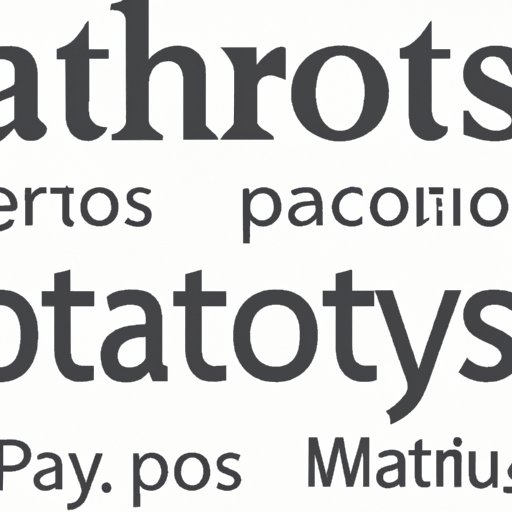Introduction
Pathos is an important element of any written work, as it allows the author to reach out to their audience on an emotional level. It is the use of language and imagery to evoke feelings of empathy, sympathy, and connection in the reader. By understanding how to recognize and effectively use pathos, writers can create powerful pieces of writing that move their readers and make their argument more persuasive. To do this, one must be able to identify pathos in writing.
Analyze the Tone of the Writing
The first step in identifying pathos in writing is to analyze the tone of the piece. This includes looking for words and phrases that express emotion or that have a strong tone. Words like “hate”, “love”, “joy”, and “sorrow” are all examples of emotionally charged words. These words are often used to create an emotional response in the reader. Additionally, it is important to look for passages with a strong tone, such as those that are angry, sad, hopeful, etc. Identifying these passages can help you understand what emotions the author is trying to evoke in the reader.

Look for Emotive Language and Imagery
Another way to identify pathos in writing is to look for emotive language and imagery. Writers often use word choice to create an emotional response in their readers. For example, words like “heartbreaking”, “devastating”, and “horrific” all evoke strong emotions. Similarly, descriptive language can be used to create an image in the reader’s mind. For example, if a writer describes someone as “broken” or “battered”, they are evoking an image of suffering and pain. Additionally, visual elements can also be used to create an emotional response. For instance, if an author includes a picture of a crying child, it will likely evoke sadness in the reader.

Recognize the Appeal to Emotions
When identifying pathos in writing, it is important to recognize the appeal to emotions. Pathos is often used as a persuasive tool to convince the reader of a particular point of view. It is important to distinguish between logos (logic) and ethos (ethics), as they are two different types of persuasion. Logos uses facts and evidence to support an argument, while ethos relies on an emotional connection between the writer and the reader. Pathos is used to bridge the gap between the two and create an emotional bond between the writer and the reader.
Identify How It Connects to the Audience
Another key element of pathos is how it connects to the audience. Writers often use pathos to create a common ground between themselves and their readers. This can be done by finding points of agreement, establishing an emotional connection, or encouraging engagement. For example, if a writer is discussing a topic that many people feel passionately about, they may use pathos to connect with their readers and draw them in.

Note How It Creates a Sense of Urgency
It is also important to consider how pathos creates a sense of urgency. Writers often use pathos to emphasize the importance of an issue or the need for action. By examining the context of the writing, one can determine what the writer is trying to accomplish and how the message is meant to be received. Additionally, exploring the implications of the message and its potential impact can help identify how the writer is using pathos to create a sense of urgency.
Consider the Writer’s Intention or Purpose
Finally, when identifying pathos in writing, it is important to consider the writer’s intention or purpose. What is the writer hoping to accomplish? Are they trying to evoke a certain emotion or persuade the reader to take action? Understanding the motivations behind the writing can help one better understand how pathos is being used and why.
Conclusion
Pathos is a powerful tool for writers, as it allows them to connect with their readers on an emotional level. To effectively identify pathos in writing, one must be able to analyze the tone, look for emotive language and imagery, recognize appeals to emotions, connect to the audience, create a sense of urgency, and consider the writer’s intention or purpose. By understanding how to identify pathos in writing, writers can create pieces of writing that move their readers and make their argument more persuasive.
Summary of Key Points
This article provided an overview of how to identify pathos in writing. This includes analyzing the tone, looking for emotive language and imagery, recognizing appeals to emotions, connecting to the audience, creating a sense of urgency, and considering the writer’s intention or purpose. By understanding how to recognize and effectively use pathos, writers can create powerful pieces of writing that move their readers and make their argument more persuasive.
Recommendations for Further Study
For those interested in learning more about pathos in writing, there are several resources available. Reading works by authors who have successfully employed pathos can provide valuable insight into how it can be effectively used. Additionally, online courses, books, and articles can offer further guidance on how to identify and use pathos in writing.
(Note: Is this article not meeting your expectations? Do you have knowledge or insights to share? Unlock new opportunities and expand your reach by joining our authors team. Click Registration to join us and share your expertise with our readers.)
